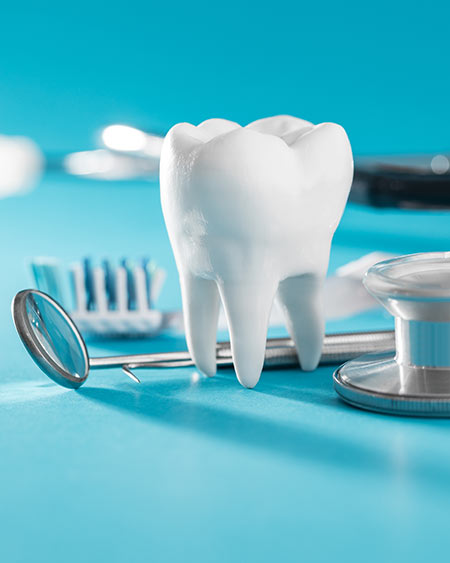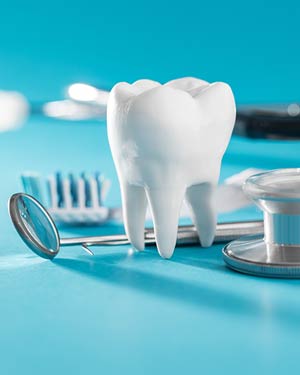Tooth Extractions Dentist Serving Mesquite, Dallas TX
Tooth extraction may be necessary if a natural tooth is badly decayed or damaged. Love 2 Smile Dental Practice offers safe and professional tooth extraction services if you need a dental extraction. Dr. Divya Nagaraj DDS would be happy to answer any questions you may have and we will provide more information about our services. Contact us or book an appointment online at your earliest convenience. We are located at 1050 N Bryan-Belt Line Rd Ste 102, Mesquite, TX 75149.




Table of Contents:
How long does it take to recover from a tooth extraction?
Is getting a tooth extracted painful?
What is the most painful tooth to extract?
What are the don’ts after tooth extraction?
Dentists will always go above and beyond to try and save your natural teeth whenever possible. However, sometimes it’s not always possible. Dental restorations can only go so far, especially if your tooth has been badly damaged such as in instances of severe decay, where a tooth is fractured or impacted, and/or if crowding is occurring. In these cases, the only safe option may be to remove the tooth entirely.
The length of time it takes to recover from a tooth extraction will depend on the complexity of the extraction itself.
However, it usually takes between 24-48 hours for patients to feel back to normal, and between 48-72 hours to get back to their routine activities. It will usually take about 7-10 days for the jaw to heal completely, even though you’ll likely feel back to normal before then.
To ensure that you recover as quickly as possible, it’s important to follow the after-care instructions given to you by, Dr. Divya Nagaraj DDS. This includes keeping the extraction site clean, taking all medication as directed, and avoiding strenuous or high-impact activities for at least two days following your procedure.
While getting a tooth extracted may sound like a scary experience, the discomfort is generally mild.
Before the procedure, Dr. Divya Nagaraj DDS will give you local anesthesia to eliminate any pain while the extraction process is taking place. They will also recommend counter or prescription medications to help you manage the pain once the local anesthesia wears off. This includes any stiffness, tightness, or throbbing that you may feel in and around the area.
Although healing occurs at different rates for different people, most patients report feeling discomfort for around 1–3 days (depending on the complexity of the case, which tooth was extracted, and how smoothly the extraction process went).
If you’re still experiencing pain after 3 days, you should contact your dentist as this may be a sign of a common condition known as dry socket. A dry socket occurs when the bone of the socket walls becomes exposed, which is usually the result of a blood clot not forming properly in the extraction site. This is easily remedied but requires the care of a dentist.
Teeth near the back of the mouth typically have the most roots, which makes them more complicated to extract. This may also result in more soreness as they are typically more difficult to remove – especially if they’ve become impacted or infected.
Wisdom teeth, in particular, are often touted as being some of the most uncomfortable extractions – not because the procedure is painful, but because there is swelling and soreness that takes place once the process is complete. Many dentists will recommend getting all 4 wisdom teeth pulled at once so that you only have to go through recovery one time.
This being said, no matter what tooth you are having removed, an experienced dentist or oral surgeon should be able to execute this procedure efficiently and comfortably.
After your extraction, Dr. Divya Nagaraj DDS will give you detailed aftercare instructions to ensure that you recover as quickly and safely as possible.
In the days following your recovery, you’ll want to make sure that you’re keeping the extraction site clean by using an antibacterial mouthwash 2-3 times a day and taking all pain medications as directed. For those without insurance, tooth extraction cost in Mesquite, Dallas, TX can range, so it’s important to discuss pricing with our team to find an affordable solution.
You’ll want to avoid brushing directly over the extraction site or drinking using a straw, as these objects can irritate and potentially harm the area. You’ll also want to avoid hard and crunchy foods, as well as strenuous or high-impact activities for at least 2-3 days following your procedure. If you require a tooth extraction, contact us at Love 2 Smile Dental for all the help and insight you need. , Dr. Divya Nagaraj DDS and our experienced and friendly dental team would be happy to provide you with information about our services or help you get booked for an appointment. For maximum convenience, you can also book an appointment online whenever you’re ready. We are located at 1050 N Bryan-Belt Line Rd Ste 102, Mesquite, TX 75149. We serve patients from Mesquite Dallas TX, Sunnyvale TX, Forney TX, Balch Springs TX, Garland TX, Rowlett TX, and surrounding areas.


Additional Services You May Like
▸ Emergency Care
▸ Smile Makeover
▸ Invisalign
▸ General Dentistry
▸ Dentures
▸ Root Canal
▸ Dental Fillings
▸ Teeth Whitening
▸ Oral Cancer Screening
▸ Tooth Extraction
▸ Dental Crown
▸ Dental Bridges
▸ Dental Check-ups & Cleaning
▸ Pediatric Dentist
▸ Cosmetic Dentistry
▸ All-on-4 Dental Implants
▸ Dental Implants
▸ Single Tooth Implants



